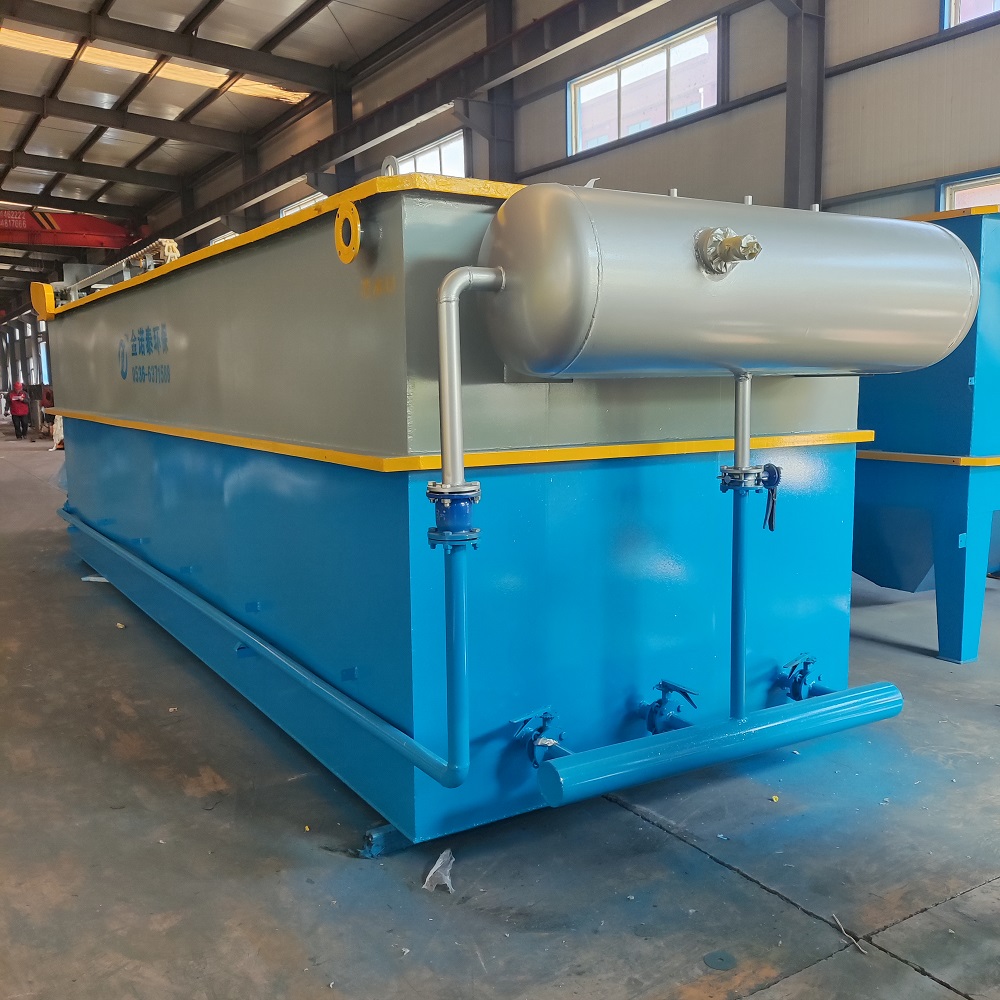
Horizontal flow dissolved air flotation machine is a solid-liquid separation equipment widely used in sewage treatment, which achieves efficient purification by adsorbing suspended solids with microbubbles. The following is a comprehensive description of its core technology and applications:
1、 Working principle
Micro bubbles are generated by the dissolved gas system
High pressure dissolved water (usually 0.3-0.5MPa) is depressurized through a release device to precipitate small bubbles of 20-40 μ m.
Bubble adhesion to suspended solids
Microbubbles combine with suspended solids (such as oils, colloids, etc.) in wastewater to form a "bubble particle" composite with a density lower than that of water floating to the surface.
Separation and removal of floating slag
The scraper automatically scrapes the floating slag from the water surface to the sludge tank, and the purified clean water overflows from the bottom and is discharged.
2、 Core Structure and Technical Characteristics
Main components
| Component | Function |
| Dissolving gas tank | Pressurize and dissolve air to generate saturated dissolved water (pressure 0.3-0.5MPa). |
| Release device | Decompression releases dissolved air and water, generating a uniform group of microbubbles (diameter 20-40 μ m). |
| Air flotation tank | Rectangular tank body, with inclined tube group in the separation zone to enhance shallow air flotation effect. |
| Scraping system | Automatic scraping of floating slag, new patented design supports extrusion dehydration and automatic unloading. |
Technical advantages
Efficient separation: SS removal rate>95%, COD removal rate 75-85%;
Low reagent consumption: reduced dosage of flocculants, lowering operating costs;
Automated operation: supports unmanned operation, integrates IoT remote monitoring;
Impact resistant load: Adapts to water quality fluctuations and has a significant effect on treating low temperature and low turbidity water.
3、 Application Fields
| Scenario | Application Cases |
| Industrial wastewater treatment | Removal of oil and suspended solids from petrochemical, papermaking, and printing and dyeing wastewater; Recycling fine fibers from papermaking wastewater. |
| Municipal and domestic sewage | Removal of algae, colloids, and organic loads; Replace the secondary sedimentation tank for sludge concentration. |
| Special industries | degreasing of food processing wastewater, separation of slaughter wastewater and blood; Pre treatment of heavy metals in electroplating wastewater. |
4、 Key operating parameters
Hydraulic retention time: 10-30 minutes;
Surface load: 3-10m ³/(m ² · h);
Dissolved gas water reflux ratio: 10-30%;
Work pressure: 0.3-0.5MPa.
5、 Maintenance and improvement direction
Regular maintenance: clean the release device to prevent blockage, check the pressure of the dissolved gas tank;
Technical upgrade:
Using a Nicolney pump to simplify the gas dissolution process and generate smaller bubbles (20-50 μ m);
The patented slag scraping system realizes the squeezing and dehydration of floating slag and automatic unloading, reducing manual intervention.
6、 Selection precautions
Water quality adaptability: High viscosity or oily wastewater requires enhanced pretreatment;
Space layout: Flat flow design takes up less space and is suitable for compact spaces;
Climate adaptability: In cold seasons/regions, it is necessary to add insulation layers to prevent freezing.